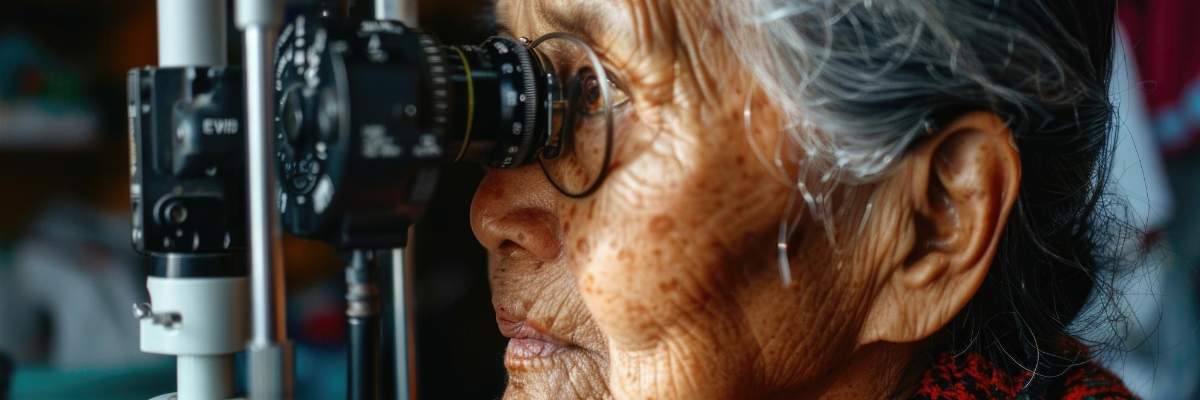Age-related macular degeneration (AMD) is a leading cause of vision loss for adults over 50, affecting the central part of your vision needed for sharp, detailed tasks like reading and driving. While the condition can be concerning, understanding its early signs and the available options for macular degeneration treatment is the first step toward preserving your sight. Early detection and proactive management can significantly slow the progression of AMD, helping you maintain your independence and quality of life.
The distinguished ophthalmology specialists at Doral Health & Wellness provide comprehensive and compassionate eye care. Our dedicated team utilizes advanced diagnostic technologies and personalized treatment strategies to deliver the highest standard of care, ensuring you receive the guidance needed to protect your vision.
Understanding the Two Types of Macular Degeneration
AMD affects the macula, the small central portion of your retina responsible for sharp, straight-ahead vision. The condition is broadly classified into two forms: dry and wet.
Dry AMD
This is the more common form, accounting for about 80-90% of all cases. It occurs when the macula thins over time as part of the aging process. Small yellow deposits called drusen accumulate under the retina. The progression of dry AMD is typically slow, and vision loss is gradual. While there is no cure, certain treatments can slow its advancement.
Wet AMD
Although less common, wet AMD is more severe and responsible for most cases of rapid, significant vision loss from the disease. It develops when abnormal blood vessels grow underneath the retina. These vessels can leak blood and fluid, which damages the macula and causes scarring. Prompt macular degeneration treatment is critical for this form of the disease.
Recognizing the Early Signs of AMD
In its early stages, AMD may have no noticeable symptoms. As it progresses, you might experience:
- Blurred or distorted central vision, where straight lines appear wavy or bent.
- A blurry or blind spot in the center of your field of vision.
- Reduced brightness of colors.
- Difficulty adapting to low light levels.
- Trouble recognizing faces.
An Amsler grid, a simple chart of straight lines, can be used at home to monitor for these changes. Any new distortion should be reported to your eye doctor immediately.
Diagnosis and Monitoring with an Eye Doctor
A comprehensive dilated eye exam is the only way to diagnose AMD. An ophthalmologist will look for drusen and other changes in your macula. Two key diagnostic tools are:
- Optical Coherence Tomography (OCT) – This non-invasive imaging test creates detailed cross-sectional pictures of your retina, allowing your doctor to see fluid leakage and measure retinal thickness.
- Fluorescein Angiography – In this test, a special dye is injected into an arm vein. Pictures are taken as the dye flows through the blood vessels in your retina, highlighting any abnormal, leaking vessels associated with wet AMD.
Proven Macular Degeneration Treatment Options
While there is no cure for AMD, several treatments can slow its progression and, in some cases, improve vision.
For Dry AMD
The primary treatment focuses on nutritional intervention and lifestyle changes.
- AREDS2 Supplements – The Age-Related Eye Disease Studies (AREDS and AREDS2) found that a specific high-dose formula of vitamins and minerals can reduce the risk of progression to advanced AMD by about 25%. This formula includes vitamins C and E, lutein, zeaxanthin, zinc, and copper.
- Lifestyle Modifications – Quitting smoking, maintaining a healthy diet rich in leafy green vegetables and fish, protecting your eyes from UV light, and managing blood pressure are all crucial steps.
For Wet AMD
Treatment for wet AMD aims to stop the growth of abnormal blood vessels and reduce leakage.
- Anti-VEGF Injections – This is the standard of care. Medications called anti-vascular endothelial growth factor (anti-VEGF) drugs are injected directly into the eye. These drugs block the chemical signal that promotes the growth of abnormal blood vessels. The procedure is quick, and the eye is numbed to minimize discomfort. Injections are typically needed on a regular basis to control the disease.
When to See a Specialist
Regular eye exams are essential for early detection, especially if you have risk factors like being over age 50, a family history of AMD, or are a smoker. If you notice any changes in your central vision, schedule an appointment with an eye doctor in NY right away. An ophthalmologist specializing in retinal diseases can provide the most advanced care. When searching for the best ophthalmologist near me, look for a provider experienced in diagnosing and treating AMD with the latest technologies.
Your Partner in Preserving Vision
A diagnosis of age-related macular degeneration can be concerning, but it is important to remember that effective management strategies are available. Through early detection, consistent monitoring, and proven macular degeneration treatment options like AREDS2 supplements and anti-VEGF therapy, you can take an active role in slowing the disease’s progression. Partnering with a skilled ophthalmologist provides the expertise and support you need to protect your vision for years to come.
The expert ophthalmology team at Doral Health & Wellness provides personalized and comprehensive care for a wide range of eye conditions. We utilize state-of-the-art diagnostics and develop tailored treatment strategies to help preserve your sight. To schedule a consultation, contact Doral Health & Wellness today at 1-718-365-2555 or visit us at 1797 Pitkin Avenue, Brooklyn, New York 11212. For general information about Doral Health & Wellness services, you can contact or email info@doralhw.org.







